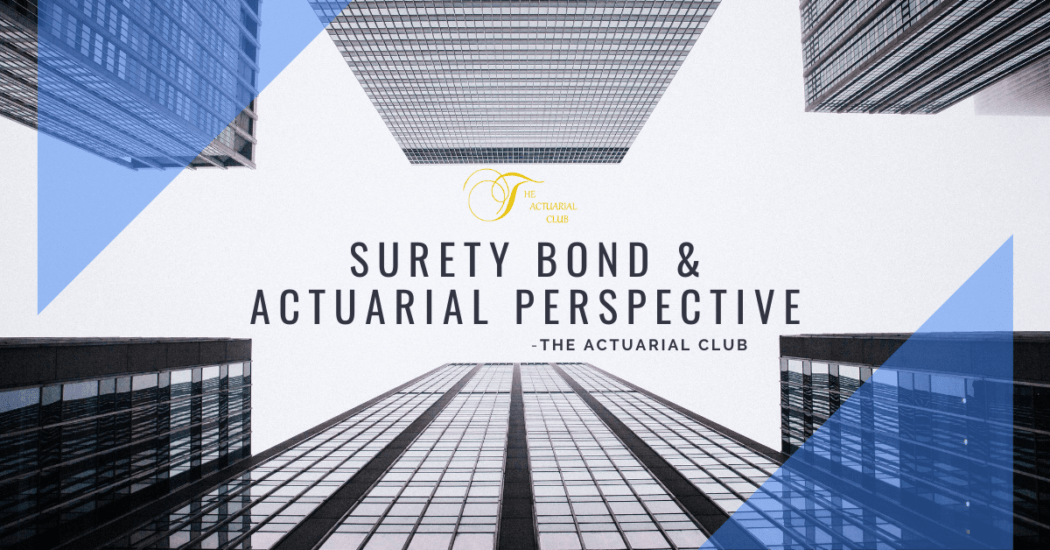Surety bonds are a type of financial guarantee that protects against potential losses or breaches of contract. They are commonly used in construction, government contracting, and other industries where performance is critical.
Surety Bond Definition
Surety bonds are commonly used in construction, government contracting, and other industries where performance is critical. They are also used in professions such as bail bondsmen, collection agency and tax preparers.
Surety Bond Uses
Surety bonds are commonly used in construction, government contracting, and other industries where performance is critical. They are also used in professions such as bail bondsmen, collection agencies and tax preparers.
Surety Bond Example
A common example of a surety bond is a performance bond in the construction industry. In this case, the principal would be the contractor, the obligee would be the owner of the construction project, and the surety would be the bonding company.
The performance bond guarantees that the contractor will complete the project according to the terms of the contract. If the contractor fails to do so, the surety will compensate the obligee (the project owner) for any losses incurred. This can include the cost of completion, delay damages, and any other financial losses incurred by the obligee as a result of the contractor’s failure to perform.
Parties Involved in Surety Bonds
The three parties involved in a surety bond are the principal, the obligee, and the surety. The principal is the party that is required to obtain the bond and is responsible for fulfilling the terms of the bond. The obligee is the party that is protected by the bond and is the one that will receive compensation if the bond is activated. The surety is the party that issues the bond and guarantees the performance of the principal.
Types of Surety Bonds
There are many different types of surety bonds, but some of the most common include:
Contract Bonds
- Performance Bonds: These bonds guarantee that a contractor will complete a construction project according to the terms of the contract. If the contractor fails to do so, the surety will compensate the obligee (the project owner) for any losses incurred.
- Payment Bonds: These bonds guarantee that a contractor will pay their subcontractors and suppliers for work performed on a construction project. If the contractor fails to do so, the surety will compensate the affected parties.
- Bid Bonds: These bonds guarantee that a contractor will enter into a contract and provide a performance bond if they are awarded a project.
- Maintenance Bonds: These bonds guarantee that a contractor will maintain a construction project for a certain period of time after completion.
Commercial Bonds
- License and Permit Bonds: A license and permit bond is a type of surety bond that guarantees a business will comply with state and local regulations in order to obtain a license or permit. Examples of this type of bond include those required for professions such as mortgage brokers, auto dealers, and notary publics.
Fidelity Bonds
- Business service bonds are the most common fidelity bond that protects the obligee (client) from losing their assets due to the dishonest act(s) of one or more principal’s employees.
- Employee dishonesty bonds: on the other hand, protect the principal from any malpractice acts of the employees. They function similarly to an insurance policy
- ERISA bonds are a type of surety bond required by businesses that offer employee benefits such as 401(k) plans. These bonds protect the employees from losses caused by the company’s mismanagement of the plan.
Others
- Supply Bonds: These bonds guarantee that a supplier will provide the materials or goods as specified in the contract.
- Public Official Bonds: These bonds guarantee that public official will perform their duties honestly and ethically.
- Court Bonds: These bonds guarantee that a court judgment will be satisfied.
- Customs Bonds: These bonds guarantee that import duties and taxes will be paid to the government.
Actuarial Considerations
Actuaries are involved in determining the risk associated with surety bonds. Actuaries, to calculate the price of surety bonds, use statistical analysis to determine the likelihood of a claim being made on a bond, and this information is used to set the bond’s price.
Earned Premiums
The premiums earned would be over the course of how the service is being rendered. On a construction model, this could be the official percentage of the work that has been completed. However, it may depend on the expected claims.
Example
This example is dependent on the T&C’s where the claim to be made at any point of time could be
- a fixed Sum Insured or
- min of (percent of non-completion of work*150% , Sum Insured)
The reason for this 150%, or some other percentage that an actuary could use, is due to the higher cost incurred to find the new contractor and the delay in the work process.
Thus the earned premium could be ( 1 – %age of non-completed work*150%)
However, it becomes operationally easier to do it evenly over the period or the construction insurance pattern which is followed till now. It’s definitely up to you and your company.
Loss Exposure
Loss =
Cost-to-Complete project
+ Liquidated Damages/Actual Damages
+ Unfunded Accounts Payable
+ Expenses
– Unbilled Contract Balances
– Salvage
A claim example has been provided in detail in the referenced presentation. Please refer to the same.
Pricing of Surety Bonds
Surety bonds are typically priced as a small percentage of the total bond amount, usually between 1-15% according to multiple references that we looked at. However, there are several factors that can affect the cost of a surety bond. These include:
- Creditworthiness of the Principal: The principal’s credit score and financial stability are important factors that can affect the cost of a bond. A principal with a higher credit score and a more stable financial situation is generally considered less risky and therefore may be able to secure a bond at a lower cost.
- Type of Bond: Different types of bonds come with different levels of risk, and therefore may be priced differently. For example, a performance bond is generally considered less risky than a payment bond and therefore may be priced lower.
- Amount of Bond: The amount of the bond is also a consideration in pricing. As the bond amount increases, the risk to the surety also increases, and the bond premium may be higher as a result.
- Length of Bond: The length of the bond is also considered in pricing. The longer the bond, the more time there is for something to go wrong, and therefore the higher the risk. As a result, longer bonds may be priced higher.
- Operating State/ Country
- The complexity of the Project: The complexity of the project is also considered in pricing. More complex projects tend to have more risks and therefore may be priced higher.
- Industry Type: The industry type also plays a role in pricing. Bonds for industries such as construction, transportation, and service are considered to be riskier than bonds for professions such as real estate and finance.
Surety Bond Reserving
- The selection of reserving methods will vary with
- Size of Company
- Available data
- Nature of surety business
- Considerations Influencing the selection of Method
- Analysis of controls and reporting
- Handling of contract balances
- Peculiar Large Claims
- Recoveries (i.e., Salvage / Subrogation)
- External Influences
- Loss Experience vs exposure-based methodologies
Other Pricing Considerations
Exposure Base: Exposures are inflation sensitive. Some bonds may have ‘Penalty’ amounts. These penalties are not affected by Consumer Price Index (CPI) but are typically mandated by statute or regulation.
“Accident” date: Since it may not be visible when the contractor is not able to fulfill the obligation, there could be a mass of losses on the last day of coverage similar to extended warranty where we see last month’s losses are generally higher.
More to be added soon!
Surety Bond Terms & Conditions
Surety bonds typically have specific terms and conditions that must be met in order for the bond to be valid.
These may include things like a minimum credit score for the principal, certain financial requirements, and a requirement for the principal to maintain certain levels of insurance.
Additionally, the bond agreement may include clauses on the
- The bond amount: The total amount of the bond, also known as the penal sum, which represents the maximum amount that the surety will pay out if a claim is made.
- The bond premium: The cost of the bond, typically a small percentage of the total bond amount.
- Credit requirements: Minimum credit score and financial requirements that the principal must meet in order to obtain the bond.
- Insurability: A requirement for the principal to maintain certain levels of insurance coverage, such as general liability and worker’s compensation insurance.
- Completion date: The date by which the project must be completed according to the contract.
- Payment schedule: The schedule for payments to be made to the contractor and subcontractors.
- Penalties for non-performance: The penalties that will be imposed if the principal fails to perform according to the terms of the contract.
- Indemnification: The requirement for the principal to indemnify the obligee and the surety for any losses that may be incurred as a result of the principal’s non-performance.
- Claims process: The process for making a claim on the bond, including the time frame for submitting a claim and the documentation required.
- Termination: The conditions under which the bond can be terminated, such as if the principal goes bankrupt or if the project is abandoned.
- Renewal: The conditions under which the bond can be renewed, and if there is any additional premium required for renewing the bond.
- Limitations of liability: The limits of the surety’s liability, such as the maximum amount that can be paid out on a claim.
- Dispute Resolution: The process and jurisdiction for resolving any disputes that may arise between the parties.
- Jurisdiction: The jurisdiction where the bond will be enforced.
In the current market, surety bonds are in high demand, particularly in the construction industry, as more and more projects are being undertaken to boost economic growth. This trend is likely to continue in the near future as governments around the world invest in infrastructure projects. Also, with the rise of technology, the process of obtaining and managing surety bonds has become more efficient and easy to access.
The post is the collation of ideas, discussions, multiple articles, and presentations. These can not always be right. Feel free to add your input/comments in the comments below!
References: Presentation of Surety Bonds from 7th Webinar on General Insurance
A guide to understanding more about surety bonds could be found here.
Bonds for Climate Changed from an Actuarial Perspective? – Reach out here

